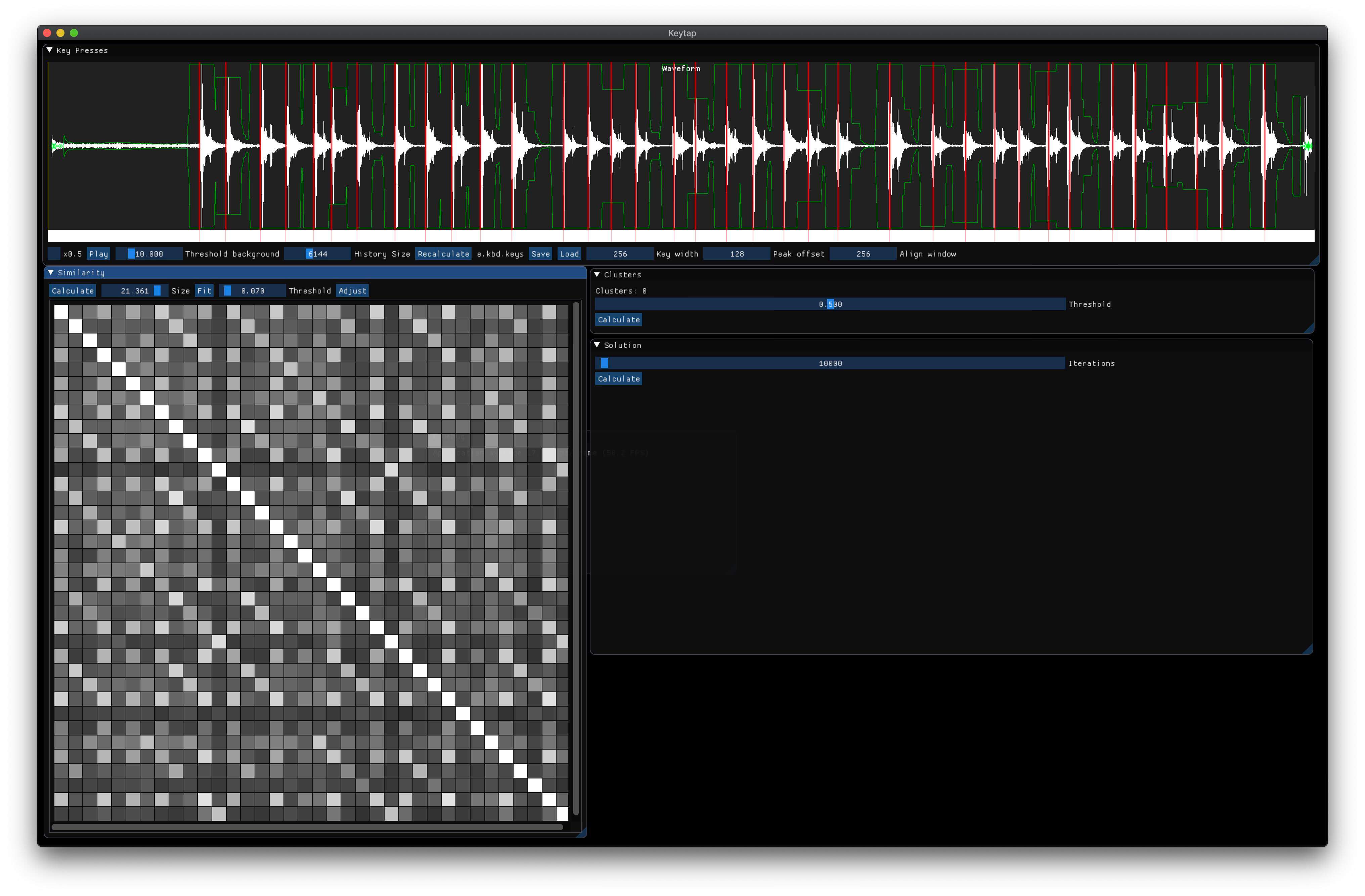KBD-Audio is a collection of command-line and GUI tools for capturing and analyzing audio data. The most interesting tool is called keytap – it can guess pressed keyboard keys only by analyzing the audio captured from the computer’s microphone.
KBD-Audio Installation
git clone https://github.com/ggerganov/kbd-audio
cd kbd-audio
git submodule update --init
mkdir build && cd build
cmake ..
makeAlso ReadNodeJsScan – Static Security Code Scanner For Node.js Applications
Tools
record-full
Record audio to a raw binary file on disk
Usage: ./record-full output.kbd
play-full
Playback a recording captured via the record-full tool
Usage: ./play-full input.kbd
record
Record audio only while typing. Useful for collecting training data for keytap
Usage: ./record output.kbd
play
Playback a recording created via the record tool
Usage: ./play input.kbd
keytap
Detect pressed keys via microphone audio capture in real-time. Uses training data captured via the record tool.
Usage: ./keytap-gui input0.kbd [input1.kbd] [input2.kbd] ...
Demo
keytap2
Detect pressed keys via microphone audio capture. Uses statistical information (n-gram frequencies) about the language. No training data is required. The ‘recording.kbd’ input file has to be generated via the record-full tool and contains the audio data that will be analyzed. The ‘n-gram.txt’ file has to contain n-gram probabilities for the corresponding language.
Usage: ./keytap2-gui recording.kbd n-gram.txt

view-full
Visualize waveforms recorded with the record-full tool. Can also playback the audio data.
Usage: ./view-full-gui input.kbd

view
Visualize training data recorded with the record tool. Can also playback the audio data.
Usage: ./view-gui input.kbd

![]() You can follow us on Linkedin, Twitter, Facebook for daily Cybersecurity updates also you can take the Best Cybersecurity courses online to keep your self-updated.
You can follow us on Linkedin, Twitter, Facebook for daily Cybersecurity updates also you can take the Best Cybersecurity courses online to keep your self-updated.